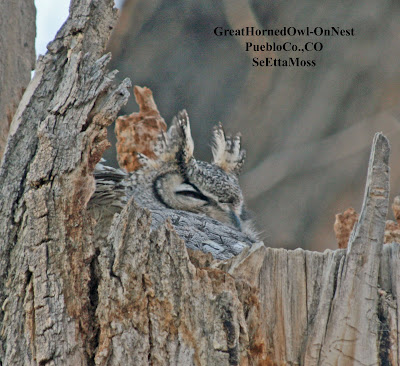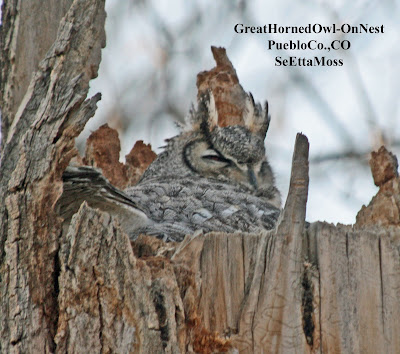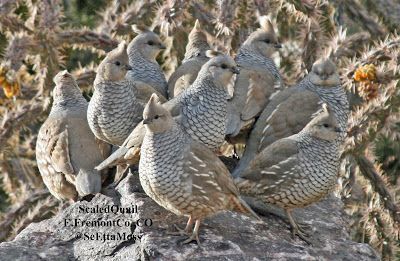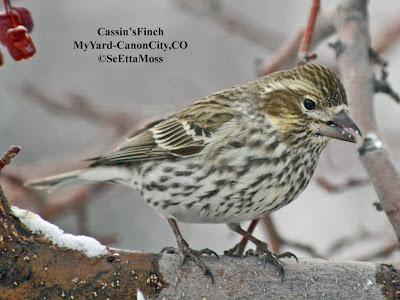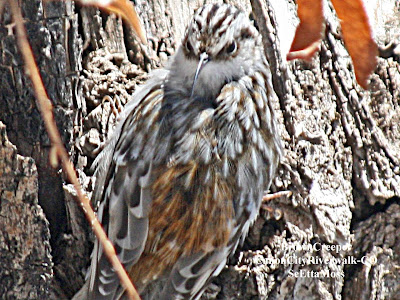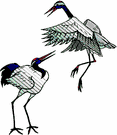Mountain Plover pair engaged in breeding behavior
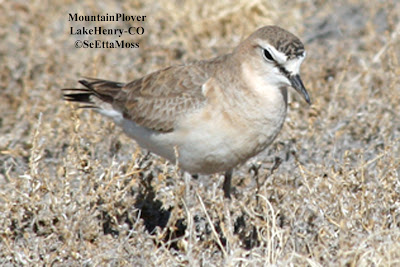 Yesterday was a gorgeous spring day with temps up to the 70's in SE Colorado and I had to be in a meeting in Pueblo until 2 pm. As my meeting was on the east side of Pueblo I decided to make a quick trip to the area north of Rocky Ford & La Junta to check the lakes and look for Mountain Plover. The winds increased so many birds were hard to find. There were white-headed gulls, waterfowl and American White Pelicans at Lakes Meredith, Henry, Holbrook, and Cheraw. Of note were 2 Horned Grebe still in Basic (non-breeding) plumage at Henry and a single Greater Yellowlegs at Holbrook.
Yesterday was a gorgeous spring day with temps up to the 70's in SE Colorado and I had to be in a meeting in Pueblo until 2 pm. As my meeting was on the east side of Pueblo I decided to make a quick trip to the area north of Rocky Ford & La Junta to check the lakes and look for Mountain Plover. The winds increased so many birds were hard to find. There were white-headed gulls, waterfowl and American White Pelicans at Lakes Meredith, Henry, Holbrook, and Cheraw. Of note were 2 Horned Grebe still in Basic (non-breeding) plumage at Henry and a single Greater Yellowlegs at Holbrook. But finding a pair of Mountain Plovers that engaged in breeding behavior that I was able to photographically document made my day and this trip well worthwhile. I spotted the Mountain Plovers in a field adjacent to Lake Henry. By the time I turned my car around and parked, the male had mounted the female. I was amazed that they remained in this position (the only behavior was the female shifting around with the male shifted around to balance on top) for 8-10 minutes before they copulated! I have to admit I was perplexed by this and used to my spotting scope just to make sure that I was not somehow missing the fact they were copulating but they clearly were not. I have since read in Birds of North America(BNA)online that "Male remains mounted from 46 s to >13 min before coition." The second photo shows the male mounted on the female prior to copulation
But finding a pair of Mountain Plovers that engaged in breeding behavior that I was able to photographically document made my day and this trip well worthwhile. I spotted the Mountain Plovers in a field adjacent to Lake Henry. By the time I turned my car around and parked, the male had mounted the female. I was amazed that they remained in this position (the only behavior was the female shifting around with the male shifted around to balance on top) for 8-10 minutes before they copulated! I have to admit I was perplexed by this and used to my spotting scope just to make sure that I was not somehow missing the fact they were copulating but they clearly were not. I have since read in Birds of North America(BNA)online that "Male remains mounted from 46 s to >13 min before coition." The second photo shows the male mounted on the female prior to copulation The third photo (just above this paragraph)shows them as they engaged in copulation which took 30 seconds or less. This photo shows how they position their tails to facilitate copulation. And the forth photo (just below this paragraph) shows the male as he is dismounting.
The third photo (just above this paragraph)shows them as they engaged in copulation which took 30 seconds or less. This photo shows how they position their tails to facilitate copulation. And the forth photo (just below this paragraph) shows the male as he is dismounting.  After they completed copulation the male walked away from the female and, as noted on the last pic, he assumes the "horizontal threat position" which BNA says occurs after copulation (or when the female doesn't crouch) while the female calls (may have to double click on the pic to enlarge it to see her beak open and throat/throat feathers inflated). SeEtta
After they completed copulation the male walked away from the female and, as noted on the last pic, he assumes the "horizontal threat position" which BNA says occurs after copulation (or when the female doesn't crouch) while the female calls (may have to double click on the pic to enlarge it to see her beak open and throat/throat feathers inflated). SeEtta 
Labels: Mountain Plovers breeding





